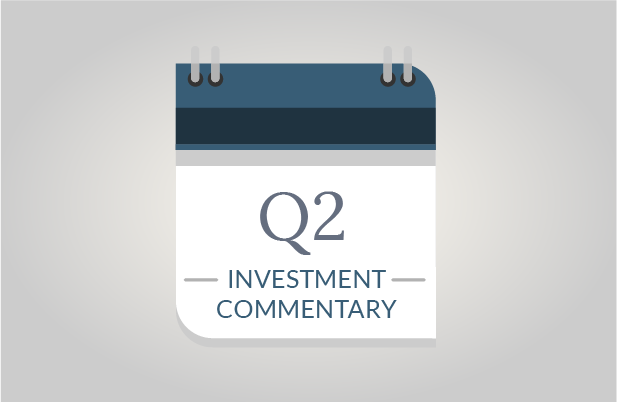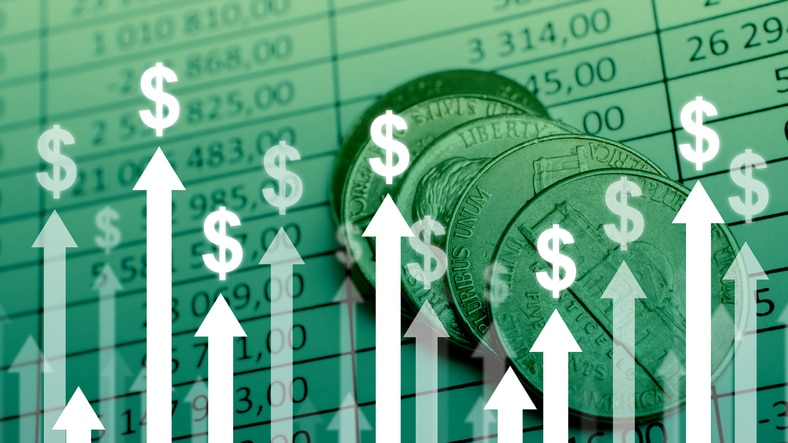- Both stocks and bonds were battered in the second quarter, with stocks temporarily entering an official bear market.
- Inflation reached the highest level in decades, putting heavy pressure on personal spending, businesses, and investments.
- The risks of a recession are increasing.
A Brutal Second Quarter
The second quarter added to first quarter losses, making the start of 2022 one of the worst in decades. Stock market declines more than doubled from the first to second quarter, with the S&P 500 Index (and other indices) officially entering bear market territory (marked by a 20% or greater drop in value). Technology stocks are feeling some of the heaviest losses. Bonds also retreated further, down approximately 10% for the year as reflected by the Barclays US Aggregate Bond Index.
Last year was marked by investors taking investment risk, driving up growth-oriented technology stocks, speculative investments, etc. This year is the opposite. Investor appetite is keenly risk-off, leading to heavy selloffs, particularly among more aggressive investments.
Rising inflation has triggered most of the market downturn and the effects of which are now raising discussions about an impending recession. There is no way to sugarcoat the current environment, but we do believe that there are indicators that offer optimism long-term. We discuss these with a forthright view of the challenges faced today.
Runaway Inflation
Inflation is the primary driver of this year’s market performance. It certainly isn’t proving to be as transitory as the Fed once expected. US consumer prices increased by 8.6% in May, representing the fastest ascent since 1981 when Americans previously contended with significant inflationary pressures. Sadly, inflation is likely to persist for some time due to ongoing supply chain challenges, energy prices, continued pent-up demand, global food impacts, etc.
Inflation undoubtably creates financial hardships as food prices, rents, gasoline and virtually all daily costs are increasing. The impacts of inflation could lead to the unfortunate outcome of a recession. Recently, Federal Reserve Chairman Jerome Powell openly expressed that the Fed needs to accept the risks of recession to combat inflation.
Will Inflation Be Persistent?
It’s impossible to predict how long inflation will persist. However, we are confident that inflation will curtail at some point, and hopefully not in the too distant future. We take note of the following considerations.
Ebbing Retail Sales: Price increases will eventually lead to slower demand due to lack of affordability. We might have already reached such a tipping point based upon recent retail sales figures which fell by 0.3% in May, representing the first decline in months. This notable decline demonstrates that rising prices can and will eventually diminish demand, creating a natural process of reducing inflation.
Housing Market Feeling the Impacts of Higher Mortgage Rates: The housing market remains very hot, but it could be poised to begin cooling as we’ve seen mortgage applications decline as mortgage rates have risen. Lack of housing affordability is making a home purchase unattainable for many. A potential cooling effect in the housing market could ripple through the economy given how integrated housing is to other sectors (lumber, appliances, furniture, etc.)
Bond Market Expectations: Treasury yields reflect future investor inflation expectations. While yields have risen over the past several months, it’s important to note that current Treasury yields reflect assumptions that inflation could begin to revert to 3%, perhaps within the next two years.
Possible Recession: Finally, while a recession is not a pleasant way to remedy inflation, it is effective. We certainly don’t wish for a recession, but a recession most likely would reduce inflation, ultimately stabilizing prices and the economy as a whole over the long-term.
We believe that inflation will curtail over time, even if that objective isn’t achieved in the most ideal fashion. Furthermore, we also believe that there’s potential for significant market upturn once inflation begins to ebb, even if the catalyst is an economic recession. Remember, the investment markets are forward-looking. Just as the markets are down double digits now while economic growth remains stable, the markets often rally well in advance of economic recoveries.
Is This Market Different?
Interestingly, questions of if the current market environment is different and requires a new strategy come up frequently, both when the markets are rising and falling.
Yes, today’s market is different in that bonds are experiencing some of the steepest selloffs in modern history. However, that doesn’t mean that investors should overhaul their investment approach or that investment fundamentals will no longer prevail. History has repeatedly proven otherwise. Relatively recent history offers examples of dangerous investment fads:
- During the internet boom of the late 90’s, there were frequent discussions that traditional valuation models were no longer relevant, requiring new market valuation models to value technology stocks. The resulting technology meltdown proved otherwise.
- Headlines in the 2010 timeframe focused on the lost decade in the S&P 500 index. If investors had fled the S&P 500 index, they would have forfeited some of the most robust returns in the following decade.
- For the past decade, growth stocks have outpaced value stocks with years of discussion that value investing was dead. This year, however, value stocks are leading.
- Last year, cryptocurrencies were the rage. This year, they’re down over 50% with some becoming illiquid, possibly facing bankruptcy.
The moral of these examples (and others) is that chasing today’s fad can make you pay when markets naturally rotate through cycles. The markets have always inherently experienced downturns (among stocks and bonds). Likewise, history has shown that U.S. markets have rebounded, and that a well-disciplined approach has rewarded investors.
Should You Still Invest in Bonds?
We understand that sharp declines in bonds are difficult for an asset class that is intended to provide income and capital preservation. Bonds have held up better than stocks, despite sustaining significant losses this year. While we can’t guarantee that bonds won’t experience further declines, we think it’s important to ask if it’s realistic that interest rates will pursue a permanent upward path. If you believe the answer is no (as we do), then remaining invested in bonds is likely wise as bonds should recover once interest rates stabilize.
Modest Quarter End Recovery Offers Potential Optimism
Interestingly, we’ve seen some modest recovery from earlier lows in both stocks and bonds in recent weeks. Stocks are up from their lows and yields have subsided from their highs. We can’t say that the downturn is over, but it is refreshing to see that investors are willing to buy.
Our Approach
SageVest does not believe in market timing because it has proven to be extremely dangerous if the timing is wrong. We are continuing to follow a disciplined approach with internal actions such as shifts in our bond portfolios earlier in the year to become a bit more defensive, buying stocks on market dips and taking advantage of tax benefits during a down market to better position clients tax-wise this year and perhaps for a few years.
We are consulting with clients about appropriate investment strategies, many of which remain appropriate as we believe in choosing a strategy that’s suitable in both up and down markets to avoid market timing risks. We are happy to discuss your portfolio and broader finances with you at any time to ensure you remain comfortable with your financial positioning.
SageVest Wealth Management




